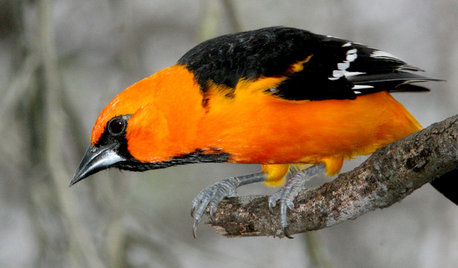Alocasia in an artificial environment for overwintering.
reptails
16 years ago
Related Stories

GARDENING GUIDESBackyard Birds: Orioles Return After Spending Winter in the Tropics
These colorful songbirds prefer woodlands and forest edges, but they’ll visit yards with fruit-producing trees and shrubs
Full Story
GARDENING FOR BUTTERFLIES3 Ways Native Plants Make Gardening So Much Better
You probably know about the lower maintenance. But native plants' other benefits go far beyond a little less watering and weeding
Full Story
GARDENING AND LANDSCAPINGHow to Make a Pond
You can make an outdoor fish paradise of your own, for less than you might think. But you'll need this expert design wisdom
Full Story
GARDENING GUIDESLessons in the Rewards of Selfless Gardening
Let go of gardening for your own vision and watch the garden’s own true vision come forth
Full StorySponsored
Zanesville's Most Skilled & Knowledgeable Home Improvement Specialists
More Discussions






xerophyte NYC
monkey_toes
Related Professionals
Grand Haven Landscape Architects & Landscape Designers · South Elgin Landscape Architects & Landscape Designers · Brentwood Landscape Contractors · Lantana Landscape Contractors · Northport Landscape Contractors · San Benito Landscape Contractors · Bowling Green General Contractors · Coatesville General Contractors · Coronado General Contractors · Exeter General Contractors · Leavenworth General Contractors · Phenix City General Contractors · Annapolis Siding & Exteriors · Castle Rock Siding & Exteriors · Orland Park Siding & ExteriorsreptailsOriginal Author
monkey_toes
xerophyte NYC